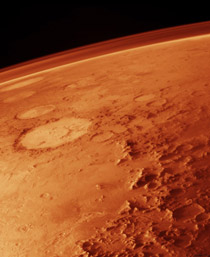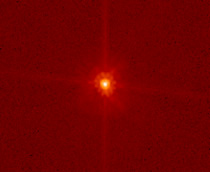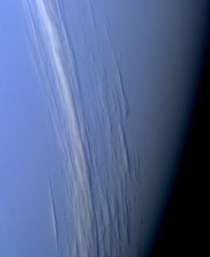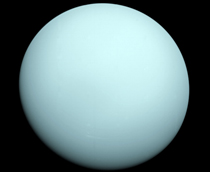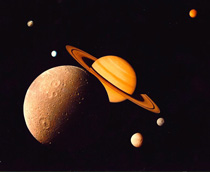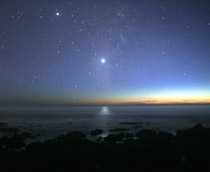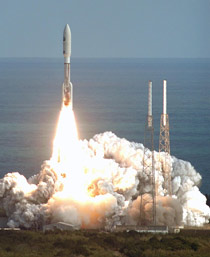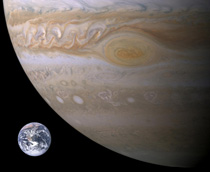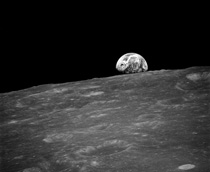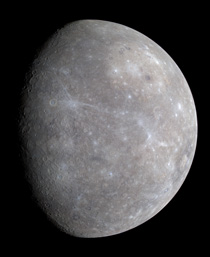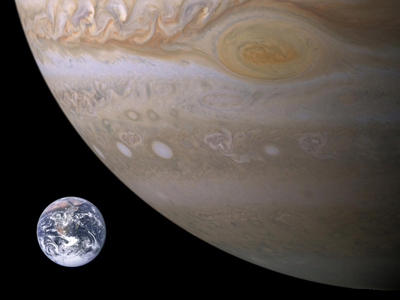
Outer Space - Planets
The Solar System consists of the Sun; the eight official planets, at least three 'dwarf planets', more than 130 satellites of the planets, a large number of small bodies (the comets and asteroids), and the interplanetary medium.
Planets can be grouped by size; by position relative to the Sun; by position relative to Earth or by history. By size, the four giant planets are Jupiter, Saturn, Uranus and Neptune. To qualify as a giant, a planet must be greater than 48,000 km. The giants are sometimes referred to as gas giants. Of the eight official planets, this leaves Mercury, Venus, Earth and Mars which are known as small planets.
This subject is covered in Science at school. If you want to challenge yourself, try 500 questions on KS3 Science.
- Has been known since prehistoric times.
- Is also known as the Red Planet.
- This is due to iron oxide on the surface, giving it a reddish hue.
- The highest known mountain, Olympus Mons, is located on Mars.
- It has two moons, Phobos and Deimos.
- Can easily be seen with the naked eye.
- Its surface appears to be composed mainly of basalt.
- Scarred by impact craters.
- Has the largest dust storms in our Solar System.
- Discovered by: Michael E. Brown, Chad Trujillo and David Rabinowitz
- Discovery date: March 31, 2005
- No satellites have been detected around Makemake so far.
- The discovery team used the codename 'Easterbunny' for the object before it became Makemake, because of its discovery shortly after Easter.
- Makemake is now designated the fourth dwarf planet in the Solar System.
- Discovered by: Urbain Le Verrier, John Couch Adams and Johann Galle
- Discovery date: September 23, 1846
- In 1613, Galileo observed Neptune when it happened to be very near Jupiter, but he thought it was just a star.
- Its atmosphere is mostly hydrogen and helium with a small amount of methane.
- Neptune's winds are the fastest in the solar system, reaching 2000 km/hour.
- It has an internal heat source - it radiates more than twice as much energy as it receives from the Sun.
- Discovered by: William Herschel
- Discovery date: March 13, 1781
- Visible to the naked eye, although due to its distance and slow orbit ancient observers didn't think it was a planet.
- Composed primarily of rock and various ices.
- Has been visited by only one spacecraft, Voyager 2, in January 1986.
- Wind speeds can reach up to 250 metres per second (560 mph).
- Saturn has been known since prehistoric times.
- Galileo was the first to observe it with a telescope in 1610; he noted its odd appearance but was confused by it.
- The ring particles seem to be composed primarily of water ice.
- Is easily visible to the unaided eye and identified as a planet because it doesn't 'twinkle' like the stars do.
- Venus has no magnetic field, perhaps because of its slow rotation.
- In 2004 and 2012 Venus passed directly between the Earth and the Sun, appearing as a large black dot travelling across the Sun's disk. This event is known as a 'transit of Venus' and is very rare: the last one before these was in 1882, and the next not until 2117!
- Discovered by: Clyde W. Tombaugh
- Discovery date: February 18, 1930
- Much smaller than any of the official planets and now classified as a 'dwarf planet'.
- Pluto has been visited by only one spacecraft.
- New Horizons was launched in January 2006 (see photo). It reached Pluto on July 14th 2015.
- Can be seen with an amateur telescope but it is not easy.
- Jupiter is the fifth planet from the Sun and by far the largest.
- It is more than twice as massive as all the other planets combined (the mass of Jupiter is 318 times that of Earth).
- There are at least 64 moons.
- Jupiter's rotation is the fastest of all the Solar System's planets, completing a rotation on its axis in just under ten hours.
- It was not until the 20th Century that we had maps of the entire planet.
- Pictures of the planet taken from space are of considerable importance; for example, they are an enormous help in weather prediction and especially in tracking and predicting hurricanes.
- In addition, they are extraordinarily beautiful.
- Mercury is the closest planet to the Sun.
- Has been known since at least the time of the Sumerians (3rd millennium BC).
- Its orbit is highly eccentric.
- Has a similar appearance to the Moon.
- The surface is flexed by significant tidal bulges raised by the Sun - the Sun's tides on Mercury are about 17 times stronger than the Moon's on Earth.
Ready for more?
not all...
quizzers. Try to win a coveted spot on our Hall of Fame Page.





